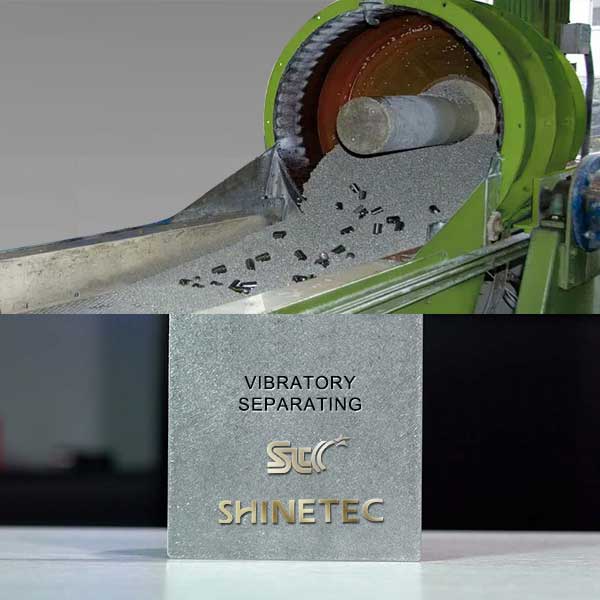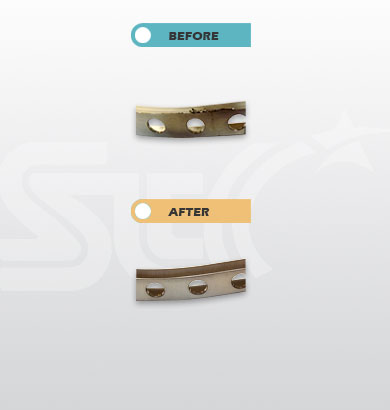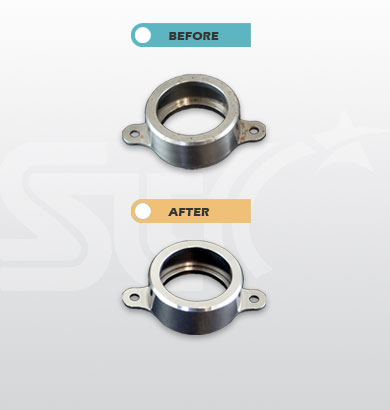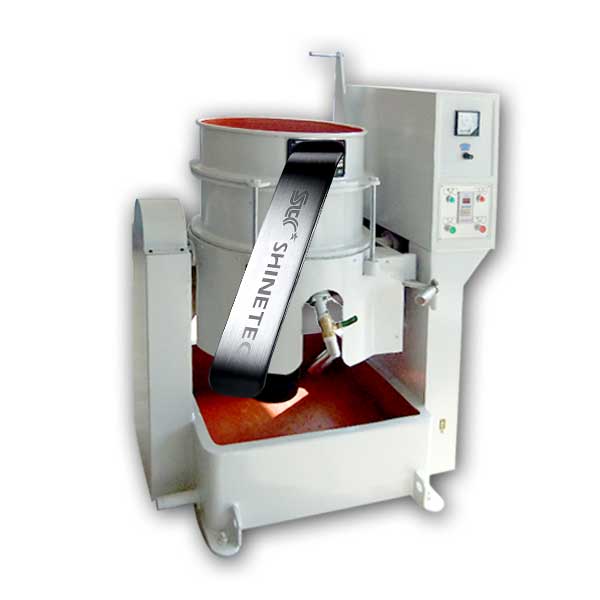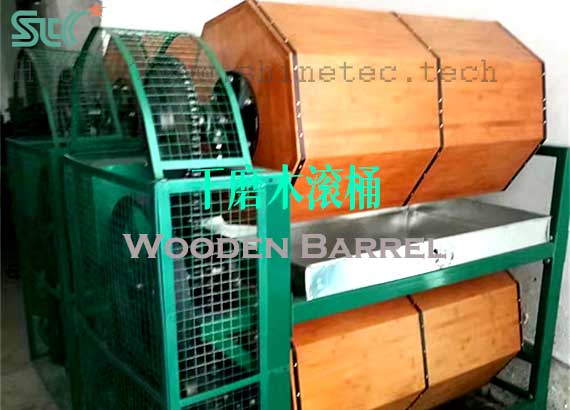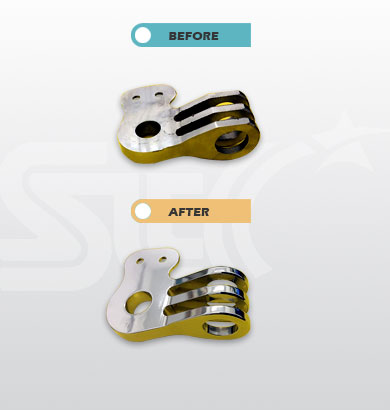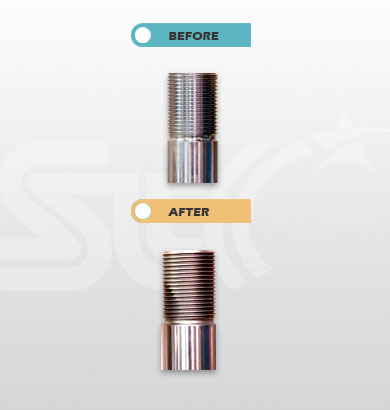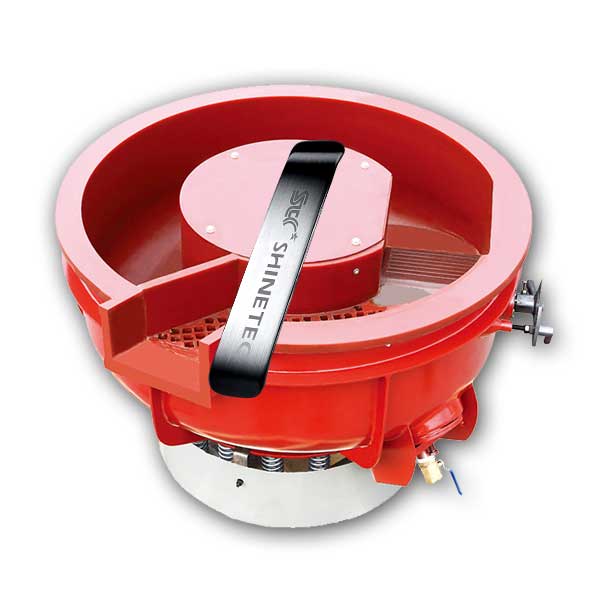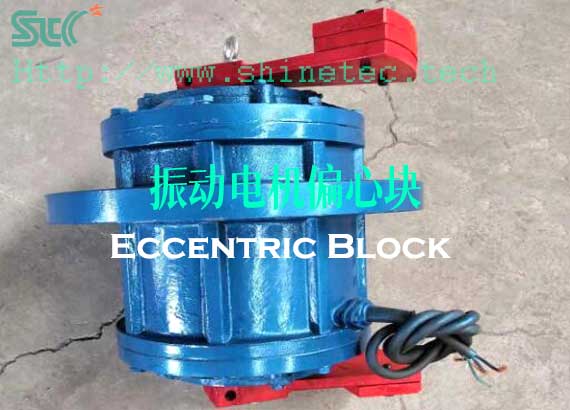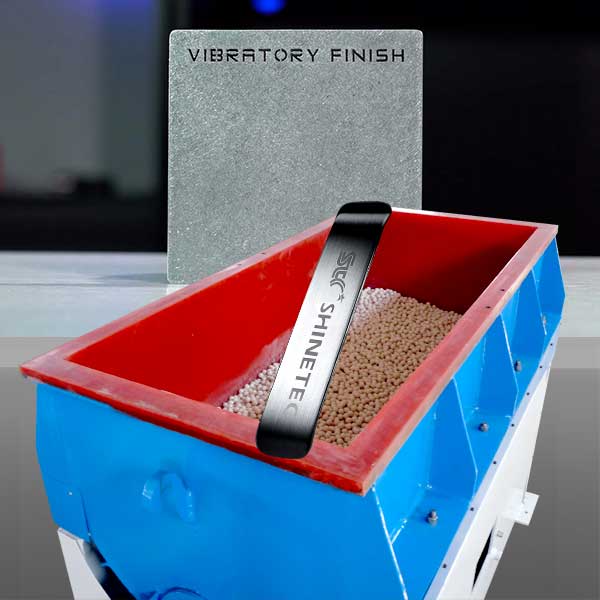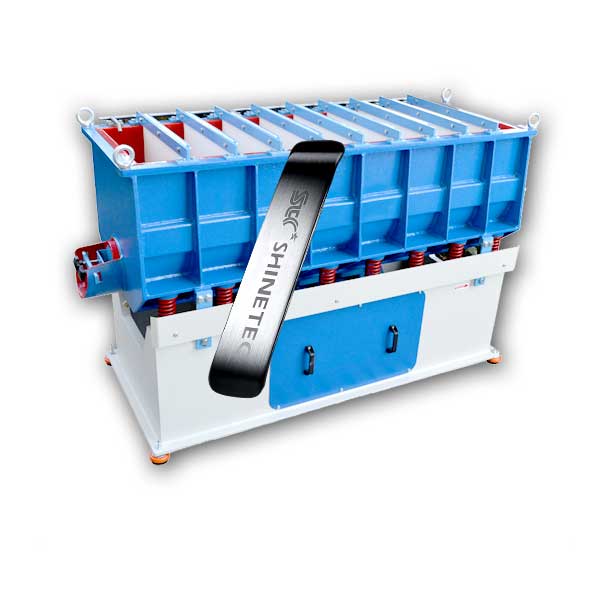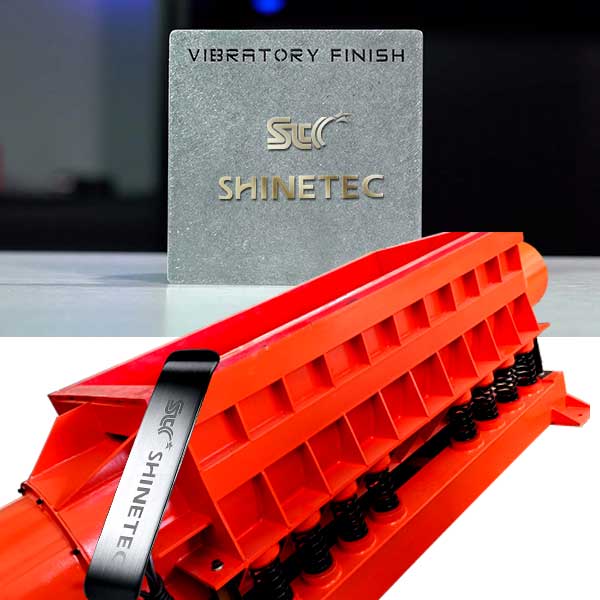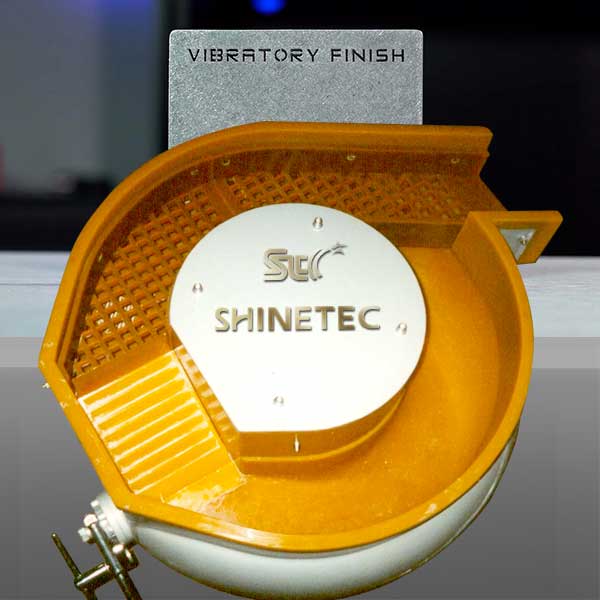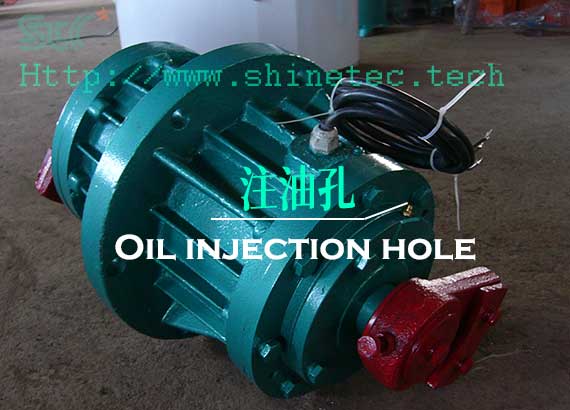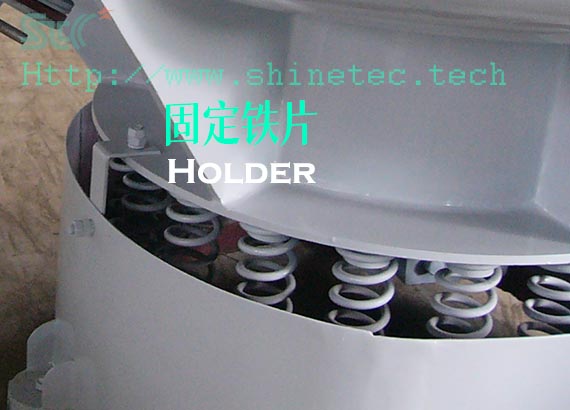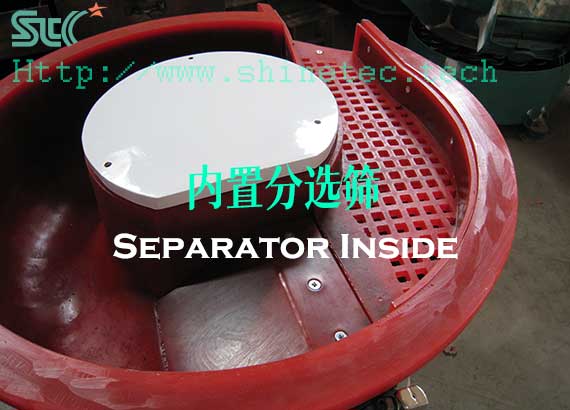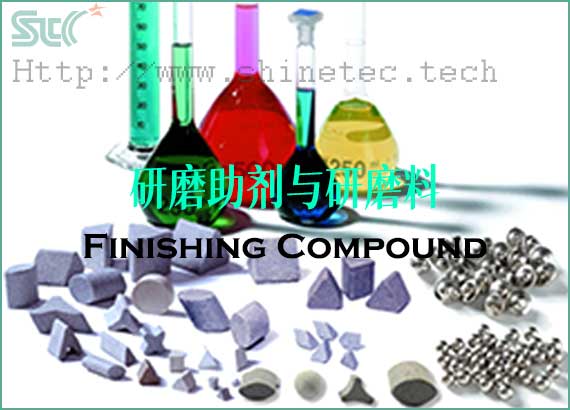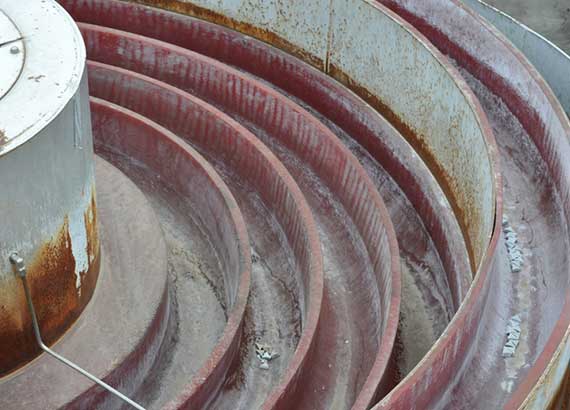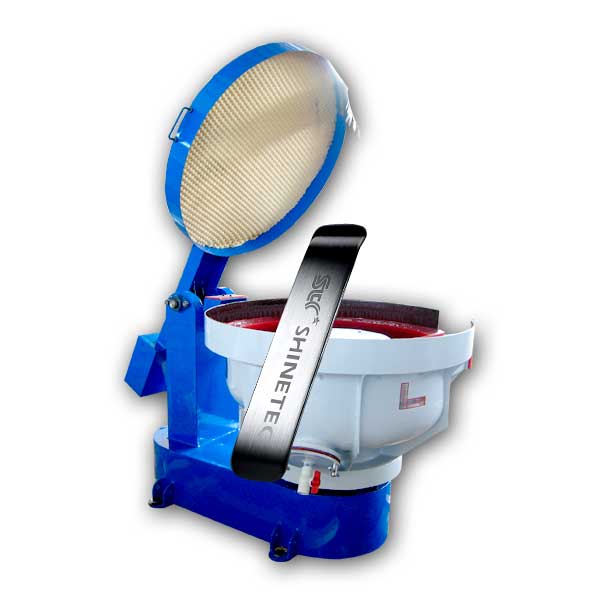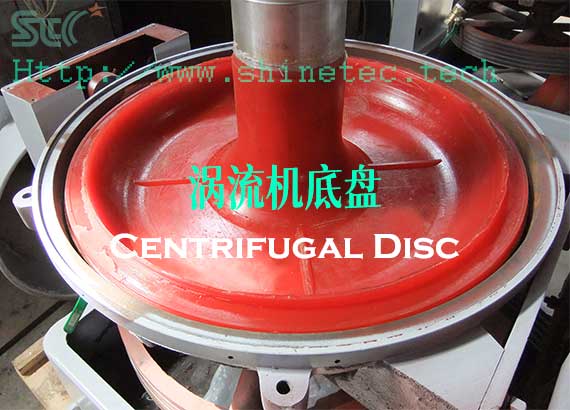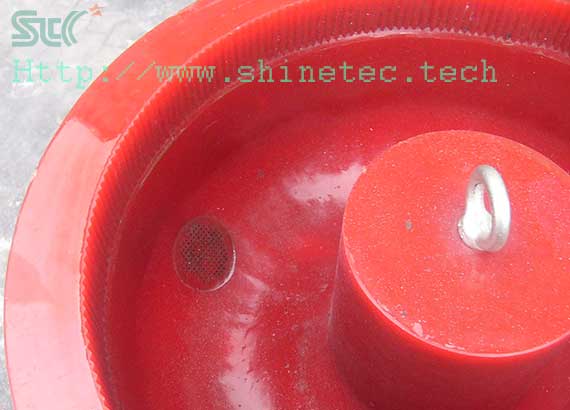What is hardware tumbler?
About Hardware Tumbler
- 1.What is hardware tumbler?
- 2. Why use a hardware tumbler for finishing and polishing?
- 3. What kind of polishing effect can the hardware tumbler achieve?
- 4. Are there any defects to hardware tumbler?
- 5. How does the hardware tumbler finish and polish?
- 6. What types of ShineTec’s hardware tumbler are there?
- 7. How much does a hardware tumbler cost?
- 8. What kind of abrasive media do hardware tumbler use?
- 9. What kind of hardware tumbler is a good polishing machine with reliable quality?
- 10. What kind of workpieces can the hardware tumbler polish?
- 11. What are the differences between different types of hardware tumblers?
- 12. What kind of daily maintenance can extend the service life of the hardware tumbler?
- 13. How to buy a hardware tumbler?
- 14. How to improve the polishing efficiency of hardware tumbler?
- 15. How long does it take to polish the parts with a hardware tumbler?
- 16. Which hardware tumbler is the best?
- 1.What is hardware tumbler?
- ShineTec’s hardware tumbler is a kind of automatic hardware finishing machinery and equipment, specially used for machining, precision molds, auto parts, aerospace, medical equipment, mechanical parts, plastic products, 3C digital, metal casting, electronics High-efficiency high-volume deburring, deflashing, descaling, smoothing, polishing of hardware parts produced in devices, hardware parts, kitchen supplies, 3D printing, textile workpieces, powder metallurgy, electrical components, minting, jewelry, instrumentation, handicraft accessories and other industries.
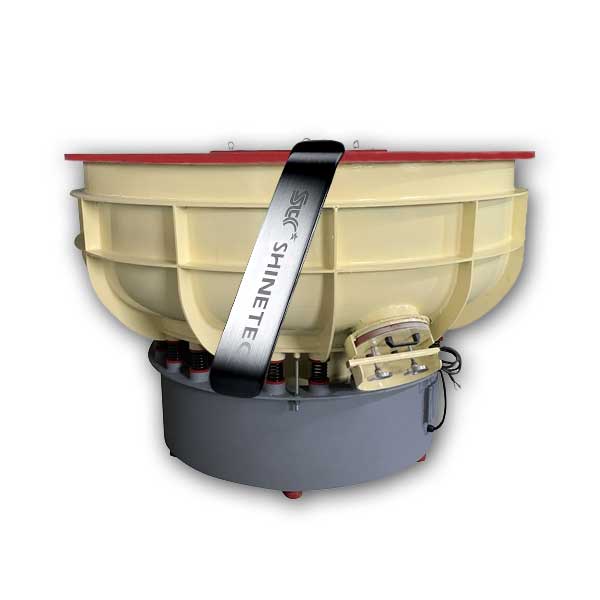
- 2. Why use a hardware tumbler for finishing and polishing?
- I believe that as a manufacturing owner, your products will no longer want to use manual polishing methods. If your products are still polished manually, we recommend that you try ShineTec’s automatic hardware finishing machine. The specific advantages are as follows:
2.1 Compared with manual deburring, the efficiency can be improved dozens of times. Using some large-scale deburring and polishing machines, hundreds or even thousands of kilograms of material can be fed at one time, and all can be completed within dozens of minutes or hours. This processing efficiency is incomparable to manual polishing.
2.2 The surface effect after polishing is uniform and controllable. The quality of hand polishing depends on the personal skill proficiency of the worker. Some products may have burrs finished cleanly, while others may still have some residue. The surface quality of each product is different. Sometimes it may also cause product damage, resulting in a relatively high scrap rate.
2.3 The operating costs of a automatic hardware tumbler are extremely low. The one-time purchase cost of the machine starts from a few thousand dollars, and it can generally be used for many years. The choice of ordinary polishing materials depends on the actual situation of the product parts that need to be processed, and the price ranges from a few dollars per kilogram to more than ten dollars. , buying a few hundred kilograms at a time can usually take several months. The amount of polishing compound is very small and the cost is almost negligible.
Ordinary models can feed dozens of kilograms of workpieces at a time, and the finishing time for a batch is generally 30-60 minutes. The direct cost of finishing and polishing when evenly distributed to each product is minimal.
On the other hand, the advantages of automated hardware tumbler are even greater in terms of saving labor costs. As long as workers need to handle it when loading and unloading materials, the machine can be operated unattended, which greatly saves labor costs.
2.4 In addition to the automatic deburring function, ShineTec’s hardware tumbler can also perform surface polishing processes such as descaling, derusting, deflashing, cleaning, chamfering, degreasing, decontaminating, and improvement of surface brightness. Craftsmanship, powerful functions and wide applicability. - 3. What kind of polishing effect can the hardware tumbler achieve?
- In terms of polishing efficiency, this fully automatic hardware tumbler can process hundreds or thousands of kilograms of mechanical parts and hardware components at a time. It is a kind of automatic hardware polishing mechanical equipment that has been widely used.
The effect of finishing depends on your needs for the product surface. To achieve the best surface finishing and polishing effect, most product polishing processes require three processes: rough finishing, fine finishing, and polishing.
The first step is to finish it roughly. Use abrasive tumbler media with high cutting force to remove defects such as burrs, scale, flash, sharp edges on the product surface to form a smooth surface with low surface roughness.
The second step is fine finishing. Use abrasive tumbler media with finer grit, some reaching micron powder size, to further perform micro-cutting on the product surface to achieve a smoother surface quality.
The third step is polishing. Use high-density, non-cutting polishing tumbler media, such as high-aluminum porcelain media, high-density porcelain media, stainless steel media, or some bio-degradable tumbler media that can simulate the polishing effect of cloth wheels, such as walnut shell abrasive chip, corncob abrasive chip, polishing Wood particles, etc., combined with special brightening compound, can improve the gloss and brightness of the product surface and achieve a sparkling, close to mirror polishing effect.

- 4. Are there any defects to hardware tumbler?
- The main disadvantage of this automatic hardware tumbler is that it cannot polish a certain part of the product surface because it is an overall polishing process. For example, the oxide scale on the surface of a certain part of a product is relatively thick. If you want to focus on this part and spend more time to finish it, this will not work. The thickness of this part is ground, and other parts will also be ground to such a thickness.
The surface quality is not as good as mirror polishing.
Some inner holes and cross holes that are too deep and too thin, such as inner surfaces exceeding 50mm, cannot be finished and polished.
Too long burrs and flash edges cannot be processed. For example, burrs and flash edges exceeding 2mm. - 5. How does the hardware tumbler finish and polish?
- In order to solve the problems of low efficiency, low quality and high labor cost of manual finishing, ShineTec’s Hardware Tumbler is an automatic finishing and polishing machine. The main operating principle is to mix special tumbler abrasive media with product workpieces, appropriate amounts of water and finishing liquid in a certain proportion, and put them into the working barrel of the polishing machine, and use mechanical motion methods such as vibration, centrifugal high-speed rotation, tumbling rotation, etc. to make the ceramic tumbler media and workpiece tumble and rotate together in the barrel, and use the cutting force of the abrasive surface to finish the burrs on the surface of the workpiece.
There are four main types of deburring and polishing machines. Each movement mode has its own advantages and disadvantages, and is suitable for different finishing and polishing needs. Vibratory finishing and polishing is the most common process method. If you need to process large quantities every day, such as hundreds of kilograms of product workpieces, then choose a vibrating polishing machine. If you need to process some small precision parts and components, the quantity is within tens of kilograms, Precision parts finishing and polishing machine is the best choice, then the centrifugal barrel finishing process is the most suitable method. If you are looking for the fastest polishing process, then centrifugal disc finishing is the fastest polishing method. If you want to find the cheapest, lowest cost finishing and polishing process, go for the tumbling barrel finishing method.
- 6. What types of ShineTec’s hardware tumbler are there?
- According to different operating modes, automatic hardware tumbler are divided into the following four types:
6.1 Vibratory (vibrating) finishing and deburring polishing machine. It is a general-purpose finisher. The spiral vibration method is used to drive the tumbler media and the workpiece to move together to achieve the deburring, descaling, deflashing, derusting, finishing and polishing effect.
6.2 Centrifugal barrel finisher. It is suitable for rapid deburring of precision parts. It is similar to the operation of a Ferris wheel. The motor drives the large centrifugal disk to rotate, allowing the four barrels on the disk to rotate at high speed, driving the tumbler media and the workpiece to move together to achieve the finishing and polishing effect.
6.3 Centrifugal disc finisher. It is the fastest deburring equipment. The chassis drives the barrel to rotate at high speed on the horizontal plane. The tumbler media and workpiece also tumble and rotate in the barrel to achieve the finishing and polishing effect.
6.4 Tumbling barrel finisher. It is the simplest structure and the lowest cost deburring method. The barrel rolls around the central axis, and the tumbler media in the barrel rolls together with the workpiece to achieve the finishing, polishing effect. - 7. How much does a hardware tumbler cost?
- The price of the machine ranges from several thousand to tens of thousands. The price of tumbler media generally costs around a few thousand dollars for an initial order of several hundred kilograms. Such an automatic deburring and polishing solution can be said to be quite economical.
However, the economic benefits or benefits brought by using the deburring and polishing machine are very high. If your products still use manual finishing and polishing, we can conduct a calculation of the processing cost to see how much our workpiece deburring and polishing machine can save you. - 8. What kind of abrasive media do hardware tumbler use?
- Because our hardware tumbler can be used to handle a variety of surface treatment process requirements, the abrasive media provided are divided into three types: rough finishing, fine finishing and polishing:
8.1 Tumbler media for rough finishing, mainly include tumbling deburring media, Resin (plastic) deburring media , divided into heavy cutting force, medium cutting force and light cutting force.
8.2 Tumbler media for fine finishing, white Corundum finishing media, chrome corundum finishing media, 3P finishing media, etc., because the particle size of the micropowder contained in it is very fine, some of which are nearly 2000-3000 mesh, it can continuously perform micro-cutting on the surface of the workpiece to form a more delicate surface roughness.
8.3 Tumbler media for polishing include high alumina porcelain tumbling media, high-density porcelain media (a high-alumina porcelain tumbling media with an alumina content of more than 95%), stainless steel media, Walnut shell tumbling media, corn cob tumbling media and so on. The main purpose is to improve the gloss and brightness of the workpiece surface.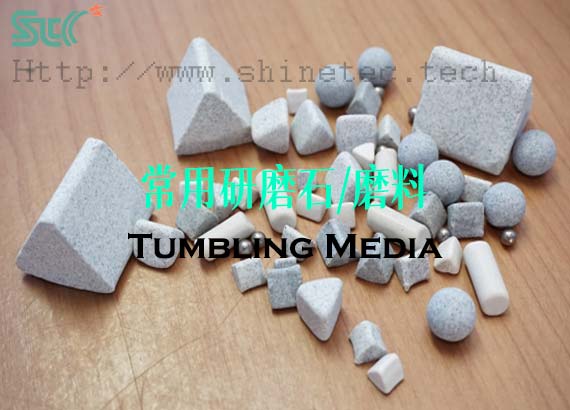
- 9. What kind of hardware tumbler is a good polishing machine with reliable quality?
- To measure the quality of a hardware tumbler, it mainly depends on the quality of the raw materials used and the quality control during the production and manufacturing process.
9.1 Quality assurance of raw materials. Because the PU lining the working barrel of the machine is a wearing part and needs to be replaced regularly, the wear resistance of the PU lining is a key quality indicator. The raw materials of our PU come from American Dow Chemical products, and the quality can be guaranteed.
9.2 Reliable motor quality. The motor used in the tumbling finishing machine is a key component related to product quality. Our motors, including vertical vibration motors, speed-regulating motors, and three-phase asynchronous motors, all come from well-known professional motor manufacturers in Wuxi and Shanghai, and their quality is reliably guaranteed.
9.3 Electrical accessories. All are purchased from domestic first-tier manufacturers such as Chint and Delixi.
9.4 Steel plate profiles. Purchased from Shanghai Baosteel Products.
9.5 Manufacturing process guaranteed. Production is controlled by skilled workers with many years of front-line production experience, adhering to the spirit of craftsmanship to ensure product quality.
ShineTec is a mass finishing and polishing machine manufacturer located in Huzhou, Zhejiang, producing various polishing machines. If you don’t know which company in Huzhou produces the best deburring and finishing machine or where is the professional hardware tumbler produced in Huzhou? you might as well take a look at our ShineTec products to learn more about them. Our goal is to be the best brand of tumbling finishing machines. - 10. What kind of workpieces can the hardware tumbler polish?
- The hardware tumbler is a specialized, mechanical automatic finishing and polishing equipment, which can be called a polishing artifact. Compared with manual deburring and polishing, this is a highly efficient automated grinding equipment that can polish hundreds or thousands of kilograms of workpieces at one time. Batch polishing may only take dozens of minutes.
This automatic deburring machine is especially good at deburring products with irregular and complex shapes, including some cross holes, dead corners, gaps, and some hard-to-reach parts of the inner wall.
The materials of workpiece range from non-ferrous metals, ferrous metals, powder metallurgy, plastics, acrylic, rubber, bamboo, stone, glass and other materials. It can be said that there is almost no material that cannot be processed.
If you are looking for a deburring machine, no idea Where is the best automatic finishing and polishing equipment? Then you can learn more about our ShineTec automatic hardware tumbler and compare the product quality and professional performance. - 11. What are the differences between different types of hardware tumblers?
- As a small mass finishing machine, hardware tumbler are divided into the following four types according to different operating methods:
11.1 Vibratory deburring finisher. It is a general-purpose grinding and deburring machine. The spiral vibration method is used to drive the abrasive media and the workpiece to move together to achieve the grinding, polishing and deburring effect.
11.2 Centrifugal barrel deburring finisher. It is suitable for surface polishing of precision parts and components. It is similar to the operation of a Ferris wheel. The motor drives the large centrifugal disk to rotate, allowing the four barrels on the disk to rotate at high speed, driving the abrasive media and the workpiece to move together to achieve the grinding, polishing and deburring effect.
11.3 Centrifugal disc deburring finisher. It is the fastest deburring equipment. The chassis drives the barrel to rotate at high speed on the horizontal plane. The tumbler media and workpiece also tumble and rotate in the barrel to achieve the grinding and polishing deburring effect.
11.4 Barrel deburring finisher. It is the simplest structure and the lowest cost finishing and deburring method. The barrel rolls around the central axis, and the tumbling media in the barrel rolls together with the workpiece to achieve the grinding, polishing and deburring effect.
11.5 Processing capability. We compare according to the largest models in their respective categories. The vibratory finishing machine can process tons of products at a time. The largest tumbling barrel finishing machine can also achieve such processing capabilities. The centrifugal disc finishing machine can reach 1-200 kg, the centrifugal barrel finishing machine can handle about 2-300 kg. Taking into account the processing time required for a complete batch, the processing capacity can be arranged in the following order: vibratory finisher >tumbling barrel finisher > centrifuge barrel finisher > centrifugal disc finisher.
11.6 Machine noise. Vibratory finisher > Centrifugal disc finisher > Centrifugal barrel finisher > Tumbling barrel finisher.
11.7 Finishing time. Centrifugal disc finisher > Centrifugal barrel finisher > Vibratory finisher> Tumbling barrel finisher.
11.8 Finishing costs. Centrifugal disc finisher > Centrifugal barrel finisher > Vibratory finisher > Tumbling barrel finisher.
11.9 Cutting force. Centrifugal disc finisher > Centrifugal barrel finisher > Tumbling barrel finisher > Vibratory finisher. - 12. What kind of daily maintenance can extend the service life of the hardware tumbler?
- 12.1 Before each start-up, should the overall appearance of the machine be checked for damage? Is the foot position stable? Is there any abnormal noise during operation?
12.2 Depending on the model, do you regularly check whether the spring of the machine is broken? Are there any cracks in the casing? Does the tension of the transmission chain, synchronous belt, and sprocket match? Is the lining damaged? Is there any water leakage from the sealing cover?
12.3 The motor needs to be lubricated every month. Are there any signs of aging and failure of the electrical components? Is the copper wire of the electric wire exposed?
12.4 Operate within the rated load capacity of the machine and do not overload it. Generally, the material loading capacity of the entire machine should not exceed 70% of the total load capacity of the machine.
If you are a hardware finishing job shop, your finishing and polishing equipment must be in working condition for a long time, so good maintenance habits can better extend the service life of your hardware tumbler and create more benefits for you. - 13. How to buy a hardware tumbler?
- As a finishing and polishing machine manufacturer, we have a variety of mass finishing machines available. Before ordering, you need to send samples for process testing. If you are satisfied with the results, please refer to the following steps to confirm your ordering requirements:
13.1 Power requirements. Our hardware tumbler requires 380V/3-phase/50Hz industrial power and is not suitable for civilian 220V/2-phase power. Special requests need to be confirmed in advance.
13.2 Processing capability requirements. First estimate the quantity of your product that needs to be processed every day, your shift schedule, and confirm the machine model based on the process plan.
13.3 Your product parts size. These workpieces within 300mm can all be processed, but the vibrating finishing machine is the most commonly finisher. For workpieces that are too long, a long rectangular tub finishing machine is needed. Some small-sized precision parts require a precision finishing machine. It is recommended to use a centrifugal barrel finishing machine. Workpieces within 100mm require rapid deburring and polishing, then the centrifugal disc finishing machine is the best choice, It is not afraid of deformation or bumping. For thin workpieces within 300mm in length, which are easy to adsorb each other, use a barrel tumbling finishing machine.
13.4 Selection of tumbling media. According to the effect of the testing sample, select the appropriate abrasive material, cutting strength, shape, and size.
13.5 Wear resistance of tumbling media. Different cutting strengths, shapes, and sizes determine the different wear resistance properties of abrasive media. Finishing media with heavy cutting force have smaller wear resistance than media with light cutting force due to the large grit size of corundum sand contained. The larger the product, the longer it will last and the more wear-resistant it will be. There are also different shapes with different wear resistance. For example, shapes such as spheres and cylinders are more durable than triangles and tri-star shapes.
13.6 Finishing time. The finishing efficiency of each model is different. You should choose the appropriate model based on your production shift schedule, product output, and batch processing time requirements for deburring and polishing.
13.7 The intensity of working. The bowl of the vibrating finishing machine is open, making it easy to load materials; the disc type is similar and easy to load and unload; the centrifugal barrel type has a smaller working barrel and a smaller opening, so it takes more time to load and unload. The opening of the tumbling barrel is also small, and the loading and unloading of materials is relatively slow; the overall labor intensity and loading and unloading time are stronger than the disc type, the tumbling barrel type, and the centrifugal barrel type. - 14. How to improve the polishing efficiency of hardware tumbler?
- Some precautions during actual use can help improve the efficiency of the hardware tumbler.
14.1 Reasonable ratio of abrasive media to workpiece. The reasonable ratio of the two when loading and feeding is the key factor affecting the finishing and polishing efficiency. The most commonly used ratio is 3:1 abrasive media to workpiece. Please refer to the table below to determine your usage:Media to workpiece volume ratio Typical application 0 : 1 No tumbling media, self-finishing and polishing, such as some decorative stones for handicrafts. 1 : 1 The same proportion of abrasive media and parts such as forgings, castings, etc., with very rough surfaces. 2 : 1 Gentle finishing, allowing workpieces to collide with each other. 3 : 1 Minimum ratio for finishing copper, aluminum, zinc and other non-ferrous metal workpieces. The workpieces may collide with each other, so the ratio is suitable for grinding and polishing ferrous metals. 4 : 1 The ratio of non-ferrous metal workpieces with average efficiency. High polishing efficiency ratio for ferrous metal parts. 5 : 1 More suitable for finishing non-ferrous metal parts. Workpieces rarely collide with each other. 6 : 1 Suitable for finishing of non-ferrous metal products. Commonly used for pre-plating treatment with resin media and aluminum and zinc alloy workpieces. 8 : 1 Suitable for finishing of non-ferrous metals or precision parts. Less surface roughness and smoothness. 10:1~20:1 Better finishing quality. Suitable for irregular shapes or fragile workpieces. Maximizing No collision between workpieces. One machine polishes one part or each workpiece needs to be separated. 14.2 Loading capacity. Too much or too little loading will affect the finishing efficiency of the machine. Please do not feed materials at 100% full load or less than 50%. Generally, the overall volume of the material after loading does not exceed 70% of the barrel volume, and the water surface does not exceed 80% of the barrel volume.
14.3 Amount of finishing compound liquid. Too little dosage will definitely not play the role of the additive in accelerating grinding. Too much dosage will produce a large amount of foam, which will pollute the environment, and on the other hand, it will block the tumbling and rotating motion of the abrasive media and the workpiece, reducing the grinding efficiency.
14.4 Suitable machine operating speed. This is a process that requires long-term experience accumulation. Polishing efficiency depends on the material and size of the tumbling media used, the amount of water and chemical compound added, and the running speed of the machine. Too little material input and high-speed machine operation speed will cause over-grinding of the product, affecting the overall size, accuracy or chamfering degree. Excessive material input and too low machine speed will cause insufficient movement of the workpiece inside the abrasive media, reduce cutting strength, and affect efficiency. - 15. How long does it take to polish the parts with a hardware tumbler?
- There are three factors that determine the finishing time it takes to a hardware deburring tumbler:
15.1 The material and surface condition of the workpiece. The length, thickness, and location of burrs, flash, and sharp edges will all affect the processing time. In addition, the harder the workpiece is, the longer it will take. On the contrary, the softer the workpiece will be, the shorter the time will be.
15.2 The choicing of polishing machines. Generally speaking, compared by finishing speed, centrifugal disc finisher > centrifugal barrel finisher > vibratory finisher > tumbling barrel finisher.
15.3 The capacity of the machine. The larger the capacity of the machine, the greater the friction process between the abrasive media and the workpiece, and the faster the desired effect can be achieved. - 16. Which hardware tumbler is the best?
- In the surface treatment industry, there are various finishing equipment and polishing process methods. Such as manual polishing, robot polishing, chemical polishing, electrolytic polishing, abrasive flow polishing, magnetic polishing, sandblasting and shot blasting, plasma polishing and other processes. Each polishing method has its own characteristics and applicable fields, so no one polishing machine is the best. Only the equipment that is more suitable for your own product polishing needs is the best.

